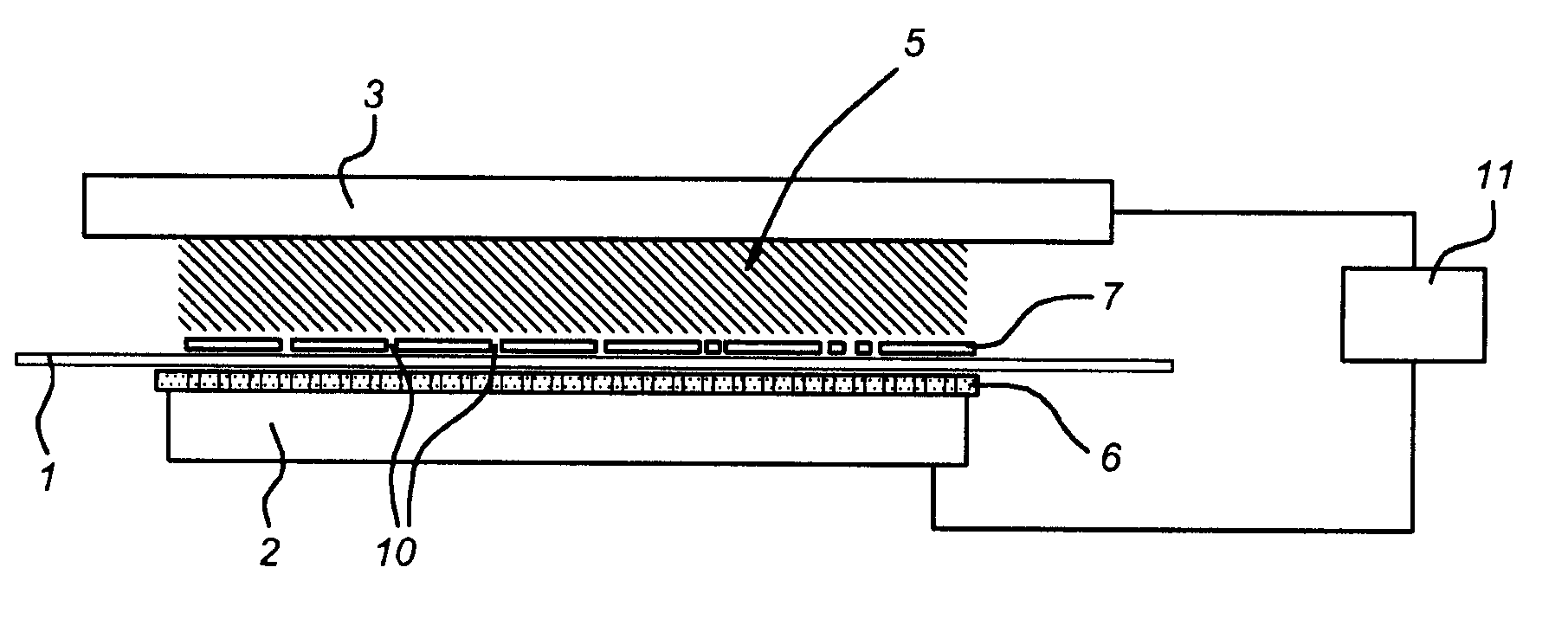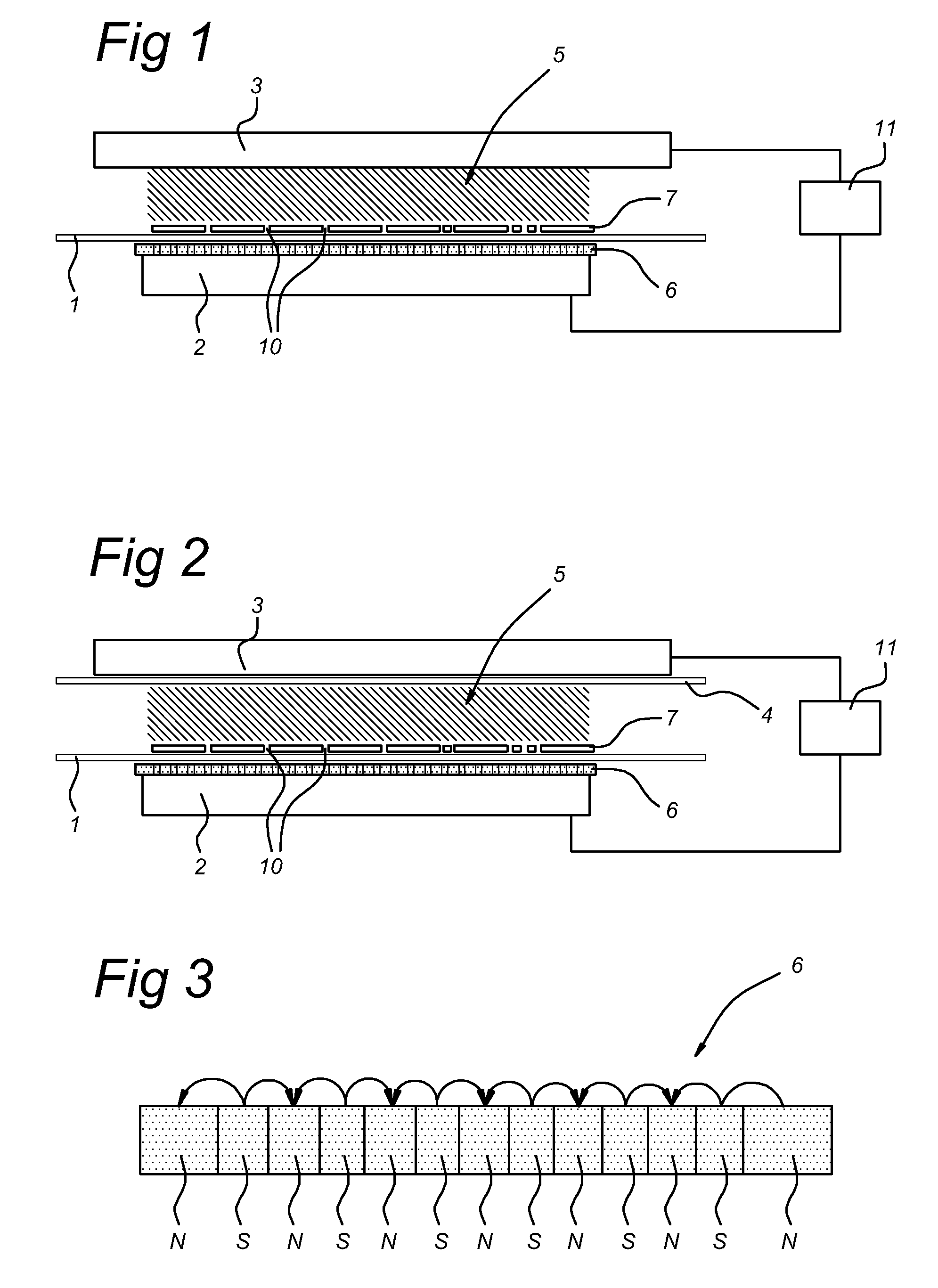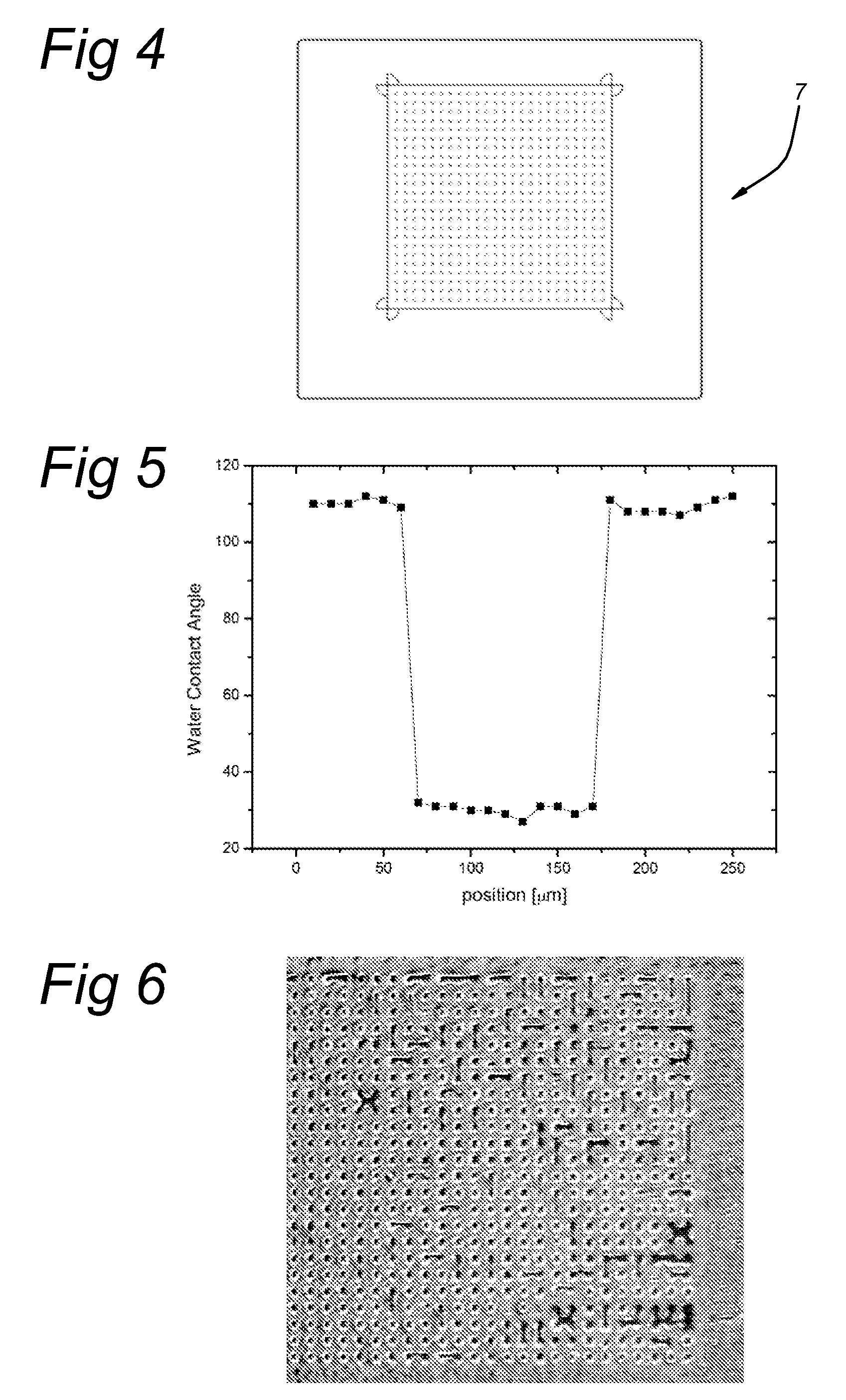Substrate plasma treatment using magnetic mask device
a magnetic mask and substrate technology, applied in the direction of decorative surface effects, decorative arts, chemical vapor deposition coating, etc., can solve the problems of no accurate pattern being taken over from the mask device on the substrate, and none of the prior art publications described above disclose the use of the mask device positioned. , to achieve the effect of convenient and efficient treatment of flat surfaces and easy generation
- Summary
- Abstract
- Description
- Claims
- Application Information
AI Technical Summary
Benefits of technology
Problems solved by technology
Method used
Image
Examples
example 1
[0033]The present method and apparatus may be used for a localized activation of a hydrophobic substrate 1. A thin film of poly-ethylene (PE), is placed in the treatment space 5 of the apparatus of FIG. 1. An argon / nitrogen (5:1) mixture (first example) or an argon / oxygen mixture (5:0.1) (second example) is introduced in the treatment space 5, and a short plasma treatment of 10 seconds was applied (frequency 130 kHz, duty cycle 2% (i.e. the ratio between plasma on time and plasma off time), pulse on-time of 100 μsec). By controlling the displacement current and electrode distance, a glow discharge plasma is generated which result in a uniform activation of the (unmasked) surface parts. In the first case, mainly amine / amide-like groups are formed on the surface of the substrate 1, and in the second case mainly peroxy-, hydroxy- and carboxy-groups are formed. In both cases, the surface of the PE substrate 1 becomes hydrophilically patterned, which for example allows easy printing.
[003...
example 2
[0044]Localized etching of a substrate 1 of polymeric base material (including Si wafer, glass, inorganic coatings, etc.) may also be executed using the present method and apparatus embodiments. In this example, the substrate 1 is a PE film. Two different gas mixtures were used, i.e. an argon / oxygen (5:1) mixture and a argon / CF4 (5:0.1) mixture. Plasma treatment was carried out in a similar manner as in example 1, applying a total etching time of 60 seconds. After plasma exposure, the depth of trenches and wells in the substrate 1 was determined using a laser profilometer. In the case of argon / oxygen mixture, the etch rate was determined to be 500 nm / min, and in the case of the argon / CF4 mixture, the etch rate was 1 μm / min. The present invention may also be used to etch a pattern on the surface of the substrate 1, e.g. by using a gas mixture of Ar, CF4 and H2 in the treatment space 5. Areas on the substrate surface exposed to the plasma can be etched in order to generate small holes...
example 3
[0045]An ITO glass substrate 1 (0.7 mm thick) was spin coated with a hydrophobic photo resist of 1 μm thick. Again, argon / oxygen and argon / CF4 mixtures were used to locally etch the photo resist layer. After two minutes of treatment time, the local water contact angle was determined. It was observed that the surface energy of the areas of the substrate 1 which were not covered by the mask device 7 have an extremely high surface energy of 70 mJ / m2, indicating a complete removal of the photo resist. The surface energy of masked areas of the substrate 1 remained very low (typically 30 mJ / m2). This type of processing may be advantageously applied in the manufacturing of organic light emitting devices (OLED).
PUM
| Property | Measurement | Unit |
|---|---|---|
| thickness | aaaaa | aaaaa |
| thickness | aaaaa | aaaaa |
| thickness | aaaaa | aaaaa |
Abstract
Description
Claims
Application Information
 Login to View More
Login to View More - R&D
- Intellectual Property
- Life Sciences
- Materials
- Tech Scout
- Unparalleled Data Quality
- Higher Quality Content
- 60% Fewer Hallucinations
Browse by: Latest US Patents, China's latest patents, Technical Efficacy Thesaurus, Application Domain, Technology Topic, Popular Technical Reports.
© 2025 PatSnap. All rights reserved.Legal|Privacy policy|Modern Slavery Act Transparency Statement|Sitemap|About US| Contact US: help@patsnap.com



